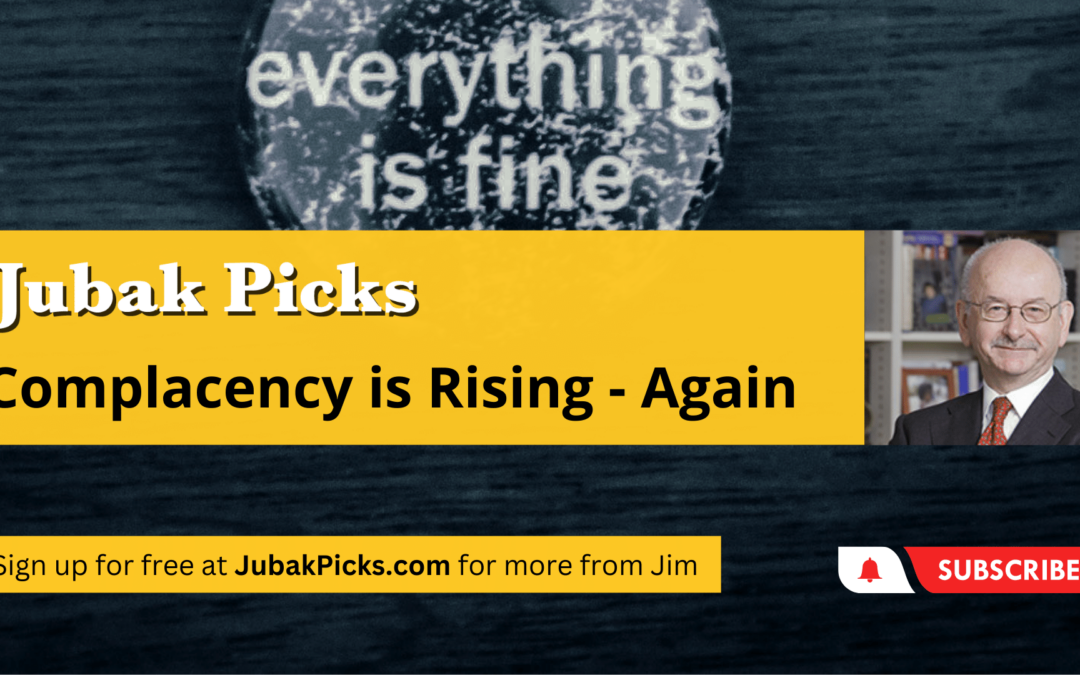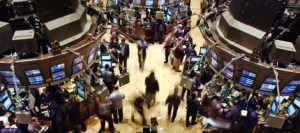
VIX


Well, that didn’t take long–I’m buying Call Options on the VIX tomorrow
Today March 29, the VIX dropped again, losing another 4.01% to 19.10. So I’ll be buying the June 21 Call Option with a strike price of 23 tomorrow. A contract for 100 shares closed at $305 today. This buy will go into my Volatility Portfolio.

Please Watch My New YouTub Video: Complacency Is Rising–Again
Today’s topic is: Complacency is Rising – Again. I’ve been following the VIX closely throughout the recent market turmoil. The VIX is often called the “Fear Index” as it measures how much people are willing to hedge against the S&P. As you can imagine, the VIX shot up with the recent bank scare but has been coming back down again recently. The market has decided very quickly that the banking crisis is no longer a problem and they just aren’t all that worried. Similarly, the ICE Bank of America Merrill Lynch MOVE Index (^MOVE), considered the “VIX of the bond market,” showed a big jump during the Silicon Valley Bank and Credit Suisse problems, but has quickly started to come back down. These are two areas where I would buy a call option if they get low enough. I will not buy puts on these because I don’t think this volatility is over. Go to JubakAM.com to follow my volatility and options portfolios.

Please Watch My YouTube video: Trend of the Week There is No Trend
This week’s Trend of the Week: There is no Trend. When I was filming this video on Tuesday the 14th, the S&P was up almost 2%, the DOW was up almost 1.5%, the NASDAQ was up 2.23% and the VIX, which had been climbing higher with the Silicon Valley Bank collapse, was down almost 15%. Since filming, the markets dipped sharply with the threat of Credit Suisse going under, and have trended slightly upward since. If you’re going to trade in this market, you have to do one of two things. One thing is to be very fast, and trade on the bounces as they show up. The other tactic is planning ahead. Long-term in this market is about a week. A week prior to filming (3/6) I bought Call Options on the VIX (the volatility index) and I sold them on March 13 with a 108% return. On March 14, however, those VIX Call options were down 27%. Talk about volatility! The trend is, there is no trend. Subscribe to my JubakPicks.com to get timely posts on how to keep up with the chaos. For more options and other volatility plays, subscribe to JubakAM.com.

Is today (or maybe tomorrow?) the moment of maximum short-term fear? I’m selling one of my Call Options on the VIX fear index today
Back on March 6, I bought Call Options on the CBEO S&P 500 Volatility Index (VIX) at a strike of 23 for the May 17 and June 21 expirations. My logic was that at 18 or so, the VIX was trading at a level that basically ignored all of the potential negative news and trends visible in the financial market for the next couple of weeks. I certainly didn’t count on the collapse of Silicon Valley Bank or the wave of fear that has today overwhelmed shares of every regional and fintech bank. I think the odds are that the crisis won’t go away, but that the extreme fear of today will turn into something less extreme over the next day or so. Fear tends to work like that in the financial markets: When investors and traders discover the sky has fallen today, they get more optimistic (not always reasonably) about tomorrow. So I’m selling the May 17 Call Option on the VIX that I bought on March 6. The purchase price that day was $$94 per contract. The price today closed at $420 per contract. That’s a gain of 116%.

VIX “Fear Index” drops back to 18–time to put on an options play on the volatile months ahead
The CBOE S&P 500 Volatility Index (VIX) has dropped back near 18–the index was at 18.50 as of noon New York time on Monday, March 6–despite what looks like a month or two of potential volatility ahead. So, as of this morning, I’m buying Call Options on the VIX for May 17 with a strike price of 23 (at a cost of $197 a contract) and on the June 23 contract with a strike price of 23 (at a cost of $254 a contract) for my Volatility Portfolio.

Please Watch My New YouTube Video: Fear Is Still on a Holiday
Today I posted my two-hundred-and-nineteenth YouTube video: Fear Is Still on a Holiday Today’s topic: Fear is Still on a Holiday. This is a peculiar market for many reasons. Stocks are sinking, but volatility fear doesn’t seem to be rising. On December 20, for example, the S&P 500 fighting a 5-day losing streak. Havens of safety were getting smaller. Pharmaceuticals and airlines, which have been strong recently, sold off on December 19. Searching for glimpses of green, like Coke (up just .14%) in a sea of red is getting harder and harder. What’s curious though, is the VIX, the CBOE Volatility Index, better known as the “Fear Index” remains on the average to low end of its recent and historic range. their recent range. The VIX tracks prices for options and futures on the S&P, so as people, in fear of a downturn, hedge by buying “insurance” against a market drop, the VIX rises. But right now we’re seeing a market that truly stinks–that’s a technical term, I know, but you can Google it–while the VIX remains low, showing little sign of fear. My explanation is that at the end of the year, investors aren’t looking to hedge against a market they still hope will turn around. The VIX is an interesting short-term play here. Buying a Call option with a 60-day out as the market returns to fear, or rationality, in 2023 could be the way to go. I’m going to check on the up-to-the-minute price action and see if the Call option is attractive here. Look to my paid JubakAM.com and my free JubakPicks.Com sites on Friday for a buy or not.

Selling my VIX Call Hedge–and a reminder of why we hedge and when we buy
The CBOE S&P 500 Volatility Index (VIX) is up another 8.87% today to 27.83 on another drop in stocks and continued worry about the effect of looming Federal Reserve interest rate increases. Today I’m going to sell the February 16 VIX Call Options with a strike of 20 (VIX220216C00020000) that I bought on December 31, 2021 in my Volatility Portfolio. I bought those Call Options for $380 a contract and I’m selling today, January 21 with those options trading at $710 a contract as of 2:45 New York time. That’s a gain of 86.8% on this position in roughly four weeks.

Call to Action: Sell November VIX Calls at 18 and Roll into December Calls at 19
Huge surge in volatility this morning. It’s as if everybody woke up and said, “Hey, you know there are risky trends in the world.” As of 12:30 p.m. New York time today, Monday, September 20, the CBOE S&P 500 Volatility Index is up 29.51% to $26.08. I think there’s more volatility ahead so today I’m going to sell the VIX November 17 Call Options with a strike price of 18 in my Volatility Portfolio and buy some more time with a purchase of the VIX December 22 Call Options with a strike price of 19.
How much of a hedge do you need–and how much can you afford
I try to use big up and (especially) down days in the stock market to stress test my portfolio. One of the things I look to learn from a high volatility down days is how the hedges that I’ve put on to protect my portfolio work under big stress. So, for example, on a big day down day like July 16, when the Dow Jones Industrial Average fell 725 points, I looked to see if 1) the hedges I owned worked to reduce or better yet eliminate my downside losses, and 2) how much those hedges were costing me in opportunities for upside gains postponed.

Selling my September 15 VIX Call Options to take profits in today’s market plunge
As of 2:40 New York time the September 15, 2021 VIX Call Options with a strike at 20 (VIX210915C00020000) were trading at $5.90 a share, up 40.48% on the day on a move higher in the CBOE S&P 500 Volatility Index (VIX) of 30.35% to 24.05. I’m selling this volatility hedge out of my Volatility Portfolio with a profit of 17.5% since I added it to this portfolio on June 1.

How I’m trading volatility now with VIX Call Options
My strategy for trading volatility using the CBOE S&P 500 Volatility Index (VIX) has two parts



